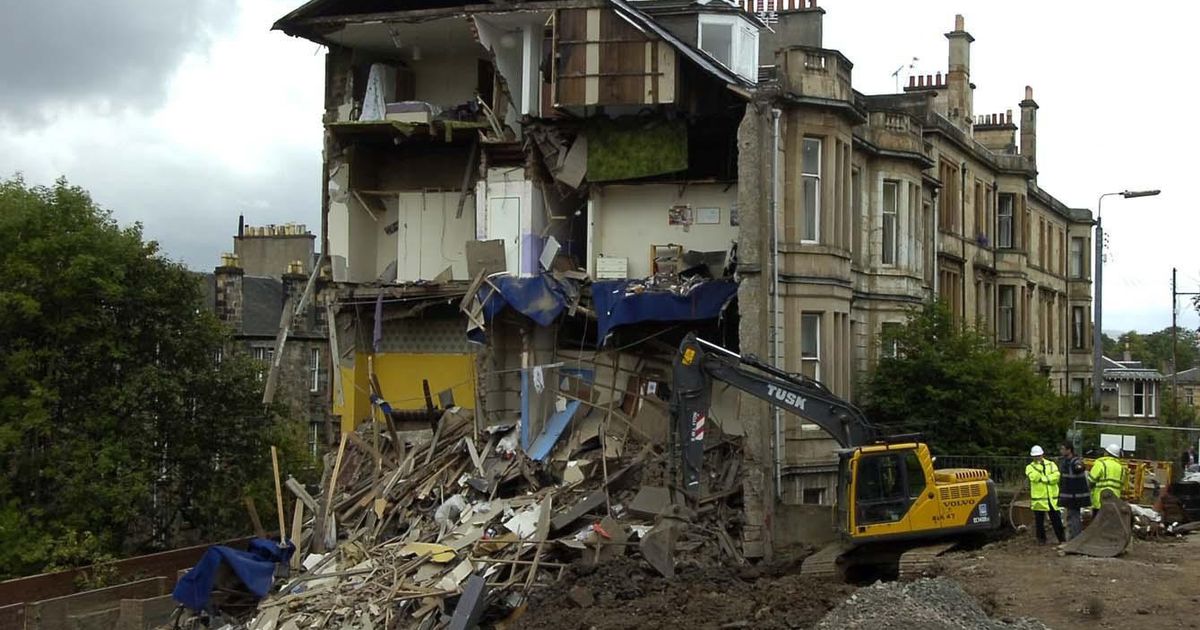Many of Scotland’s crumbling tenements, aged over 100 years, need massive overhaul – or residents could be forced out of their homes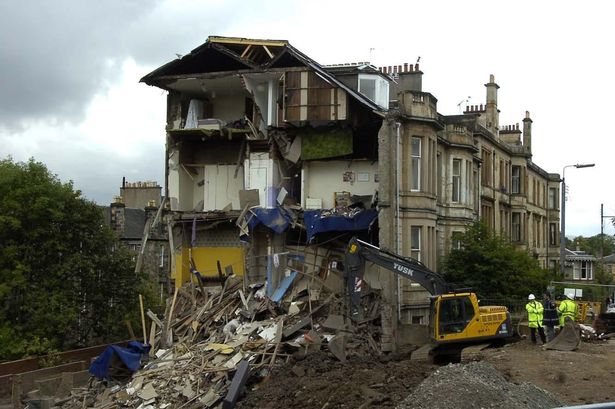 Residents of 275 Wilton Street, Glasgow. were evacuated after a major crack appeared and the gable wall collapsed in 2007 – more and more buildings are feared to be in dangerous condition
Residents of 275 Wilton Street, Glasgow. were evacuated after a major crack appeared and the gable wall collapsed in 2007 – more and more buildings are feared to be in dangerous condition
Scotland’s tenement timebomb is only going to get worse, an MSP has warned.
Labour’s Paul Sweeney is demanding a review of building control regulations after witnessing traumatic evacuations.
The warning comes after an increasing flow of residents being forced to suddenly evacuate their homes due to the buildings crumbling – leaving them homeless.
Their crisis has been compounded by having to pay costs for new housing on top of existing mortgages and paying double council tax for both properties.
It is feared emergency evacuations due to buildings being deemed dangerous will soar due to many tenement buildings in cities such as Glasgow, Edinburgh and Dundee being more than 100 years old, with structural issues needing costly repairs.
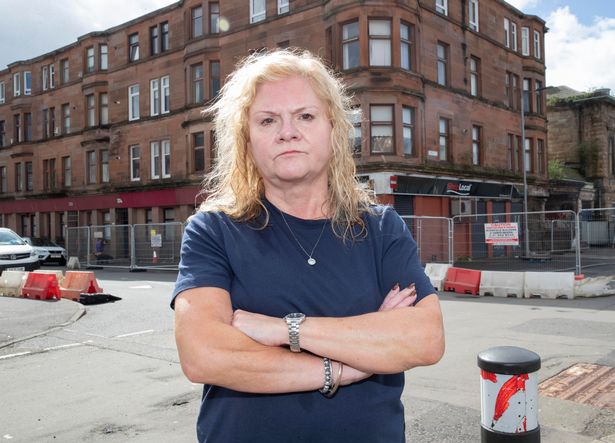 Wendy Murray was forcibly removed from her flat at Stevenson St, Calton – and is now homeless, while racking up council tax and mortgage bills
Wendy Murray was forcibly removed from her flat at Stevenson St, Calton – and is now homeless, while racking up council tax and mortgage bills
The latest threat will heap more pressure on local authorities who are battling a homelessness crisis.
Sweeney, who has been involved in several mass evacuations of traumatised residents in Glasgow, said the problem will only get worse.
And he has demanded a review of regulations which allow councils to evacuate residents without having automatic responsibility for rehoming them during the crisis of homelessness.
Sweeney spoke out after the Daily Record told of the case of Wendy Murray, 58, who was ordered out of her home in Glasgow’s east end, with a few hours notice, after building inspectors declared the tenement block unsafe.
 Join the Daily Record WhatsApp community!
Join the Daily Record WhatsApp community!
Get the latest news sent straight to your messages by joining our WhatsApp community today.
You’ll receive daily updates on breaking news as well as the top headlines across Scotland.
No one will be able to see who is signed up and no one can send messages except the Daily Record team.
All you have to do is click here if you’re on mobile, select ‘Join Community’ and you’re in!
If you’re on a desktop, simply scan the QR code above with your phone and click ‘Join Community’.
We also treat our community members to special offers, promotions, and adverts from us and our partners. If you don’t like our community, you can check out any time you like.
To leave our community click on the name at the top of your screen and choose ‘exit group’.
If you’re curious, you can read our Privacy Notice.
Sweeney, who has championed the cause of saving heritage buildings, said: “I read the Daily Record story and once again I was struck at how little support there is for people whose homes are declared unsafe through no fault of their own.
“The Building (Scotland) Act makes it very easy for building control officers to declare an evacuation.
“But at that point the occupiers can be cast to the winds. If they can make a claim through insurers that is one thing but if that doesn’t work out they are in a major crisis.
“Further to that, once the buildings ares shut down, it can be evidenced that there can be little effort made to move at emergency pace to get people back in their homes.
“I know of at least 100 residents at various sites who have found themselves in the same crisis as Wendy Murray.
“The current measures do little to protect them.”
 Paul Sweeney MSP
Paul Sweeney MSP
Sweeney warned Glasgow alone was estimated to have 70,000 tenement flats, aged over 100 years, where crumbling stonework and structural decay could leave owners facing big repair bills.
In 2018 a report estimated that around 46,000 tenement flats in Glasgow , which were built before 1919, had been deemed dangerous and needed structural, weather-tightening and restoration work.
Many were thought to require more than £500,000 worth of work to bring them up to scratch. The bill, at that point, was thought to be up to £3billion.
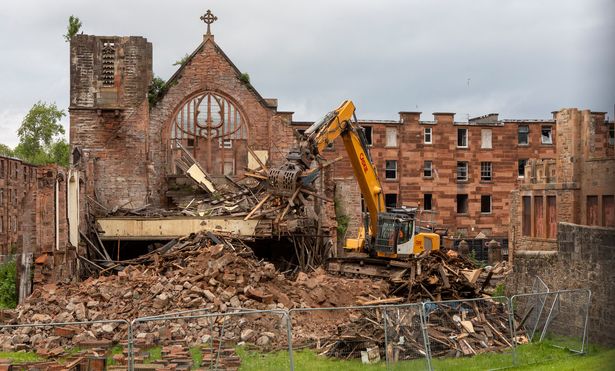 The Clune Park housing estate in Port Glasgow was abandoned after falling into a state of disrepair. It was made up of 430 flats, which rotted through neglect
The Clune Park housing estate in Port Glasgow was abandoned after falling into a state of disrepair. It was made up of 430 flats, which rotted through neglect
But Sweeney believes the current cost, across Scotland, of fixing tenement buildings could have trebled to almost £10billion.
Sweeney said: “The law as it stands is insanely authoritarian, with zero obligation to help folk who have been removed from their homes at a moment’s notice.
“Council Building Control officers can just kick people out without any support.”
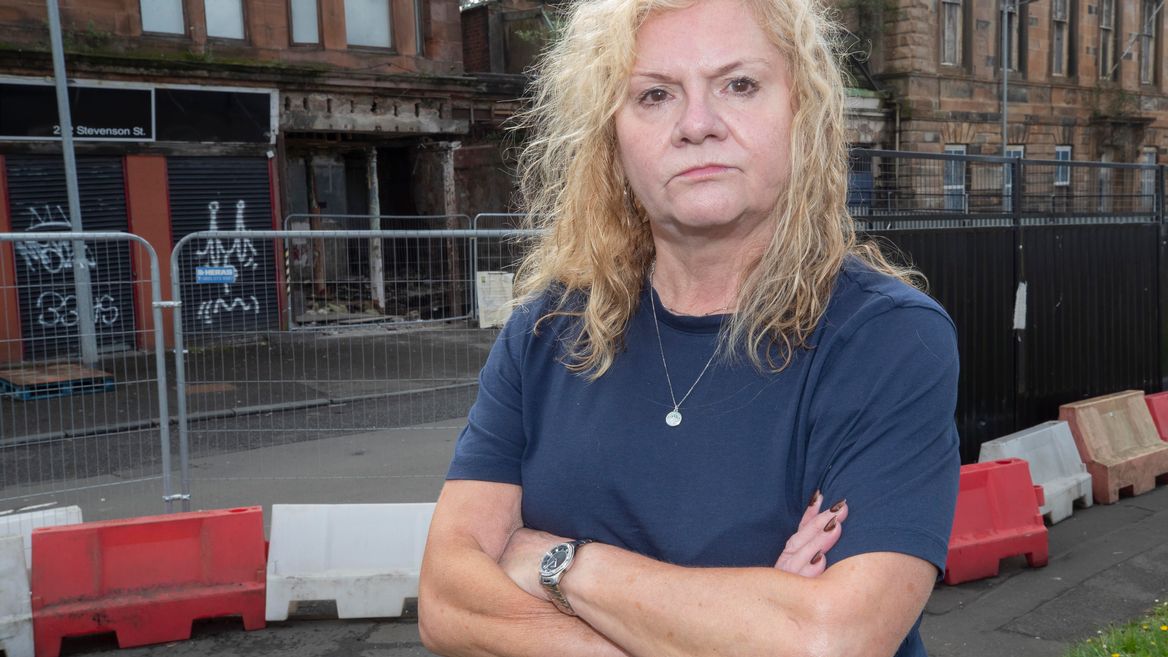 Wendy’s crisis as she is made homeless – yet still gets footed with mortgage and council tax payments
Wendy’s crisis as she is made homeless – yet still gets footed with mortgage and council tax payments
The Daily Record told last week how Wendy Murray, 58, was given just hours to vacate her home on April 2 along with nine other residents.
It was discovered that a gable end wall was precariously supported by a set of rusted pillars within a derelict pub at an adjoining building.
Wendy was told by the council they could not help with costs of emergency rehoming.
She was forced to declare herself homeless and even then was only offered a room in the notorious Alexander Thomson Hotel, where nine people died of drug overdoses during lockdown.
She is now being represented by the Govan Law Centre – who are seeking judicial review of the decision by Glasgow City Council.
Wendy said: “The hotel they have offered is totally unsuitable for a woman of my age.
”I’ve been thrown out of my own home and I have absolutely no idea who is going to do any repairs or how long it will take. I am at my wits’ end.”
ends.
A spokesperson for Glasgow City Council said checks found severe corrosion to the beams and the collapse of floor areas at the building in the Calton part of the east end.
A spokesperson added: “As with all dangerous buildings, the owners are responsible for repairs and they can’t move back in until that has been done. We are in the process of establishing full legal ownership to push this forward.”
A Scottish Government spokesperson said: “We have every sympathy with Ms Murray and with anyone who is temporarily out of their home due to similar extenuating circumstances. It is however for homeowners to work with their insurers to meet their costs.
“Under the Building (Scotland) Act 2003, building owners are responsible for preventing their buildings falling into a dangerous condition.
“Local authorities have powers to take action to deal with buildings that they consider to be dangerous or defective and it is for them to determine the most appropriate course of action based on the circumstances of each case.”
Local authorities have the power to carry out remedial work then recover the associated costs from the relevant owners.
Many owners can find themselves stymied by insurance companies when the repairs are for adjacent buildings – which means they are not covered.
